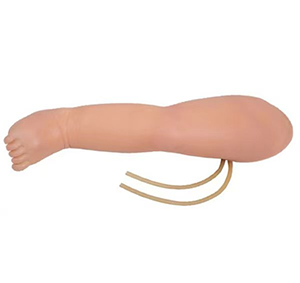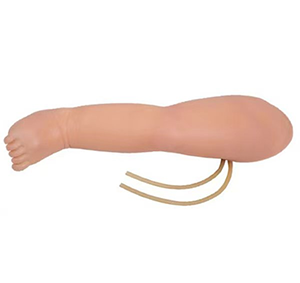In clinical practice, infantile venipunction is a highly technically demanding task. Since the blood vessels of infants are thin and soft, and the patients do not have the ability to cooperate, the puncture failure may lead to complications such as hematoma and infection. In view of these risks, whether the infant leg venipunction model can reduce the medical risks during the operation has become an important issue in medical education.
Model design and function

Infant leg vein function model
The infant leg venipuncture model is designed based on real infant anatomy, with highly simulated skin touch and vein orientation, and can also simulate changes in venous pressure. Through this model, students can practice:
- Vein localization;
- Acupuncture Angle control;
- Fixation after puncture.
These features provide a safe training environment for participants to fully master key skills before entering the clinic.
Data support: The actual effect of the model
Multiple studies have shown that students trained using simulation models have a higher success rate in real-world operations. For example, a medical education study counted the puncture success rates of 100 medical students and found the following:
- The first puncture success rate of students without model training was only 57%;
- The success rate of students trained with the model increased to 88%.
In addition, the model training significantly reduced the rate of patients with secondary puncture and related complications due to puncture failure.
Medical risk reduction
The main advantage of using model training is that it reduces the likelihood of errors occurring in actual patients:
1. Reduce tissue damage: Through multiple simulated exercises, students can master the Angle and depth of injection more accurately in actual operation, and avoid blood vessel tearing or surrounding tissue damage.
2. Improve psychological stability: After mastering skilled skills, students can complete the operation more calmly and stably when facing the real scene.
3. Optimize patient experience: A higher success rate of initial puncture not only reduces pain and fear for the baby, but also increases family satisfaction.
Sum up
Infant leg venipunction model not only provides a safe and efficient learning tool for medical students, but also significantly reduces the medical risk in actual operation. This model is an indispensable training resource for medical students and healthcare professionals who want to reduce errors and improve care in a clinical setting.

